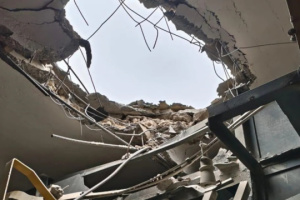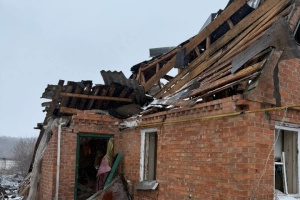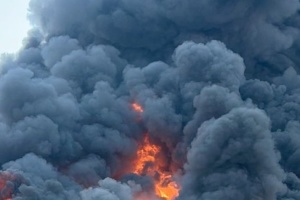
Russia unable to sustain repeated large-scale missile strikes against Ukraine - ISW
The Institute for the Study of War (ISW) said this in its Russian offensive campaigns assessment for December 29, Ukrinform reports.
According to ISW analysts, Ukrainian Main Military Intelligence Directorate (HUR) Deputy Chief Major General Vadym Skibitskyi stated on November 6 that Russian forces produced 115 long-range high-precision missiles in October 2023, including 30 Iskander-M cruise missiles, 12 Iskander-K cruise missiles, 20 Kalibr cruise missiles, 40 Kh-101 cruise missiles, 9 Kh-32 cruise missiles, and 4 Kinzhal ballistic missiles. Skibitskyi also stated that Russian forces had a total of 870 high-precision operational-strategic and strategic missiles in reserve in November and that this number increased by 285 missiles between August and November.
"Although Ukrainian officials have recently stated that Russian forces have partially restored their cruise missile stockpiles, Skibitskyi's statements about recent Russian missile reserve totals and monthly production rates indicate that Russian forces are unable to sustain repeated large-scale missile strikes comparable to the December 29 strike series," ISW said.
At the same time, ISW analysts said that Russia is able to domestically produce Shahed-136/131 drones at a much higher rate, however, largely due to the creation and expansion of the drone production facility in the Alabuga Special Economic Zone in the Republic of Tatarstan.
The Institute for Science and International Security reported on November 13 that even after a one-month delay in production the Alabuga facility planned to produce 1,400 Shahed-136 drones between February and October 2023 and plans to produce a total of 6,000 drones by September 2025.
"Russian forces will therefore likely be able to conduct more consistent Shahed strikes than missile strikes, as Ukrainian officials have previously indicated," the report said.
However, ISW says, the strike package that Russian forces launched on December 29 appears to be a culmination of several months of Russian experimentation with various drone and missile combinations and efforts to test Ukrainian air defenses.
Analysts believe that Russia was likely deliberately stockpiling missiles of various sizes through the fall and early winter of 2023 in order to build a more diverse strike package and apply lessons learned over the course of various recent reconnaissance and probing missions.
"Russia will continue to conduct strikes against Ukraine at scale in an effort to degrade Ukrainian morale and Ukraine's ability to sustain its war effort against Russia," ISW said.
Therefore, ISW experts say, Western aid remains vital for Ukraine's ability to defend against Russian strikes, and the end of such aid would likely set conditions for an expanded Russian air campaign in Ukraine.
Russia launched a massive missile and drone attack on Ukraine on December 29. Overnight, the invaders attacked the country with attack drones and missiles of various types. In total, the enemy used 158 missiles and drones. Ukrainian air defense forces destroyed 27 Shahed-136/131 UAVs and 88 Kh-101/Kh-555/Kh-55 cruise missiles.




